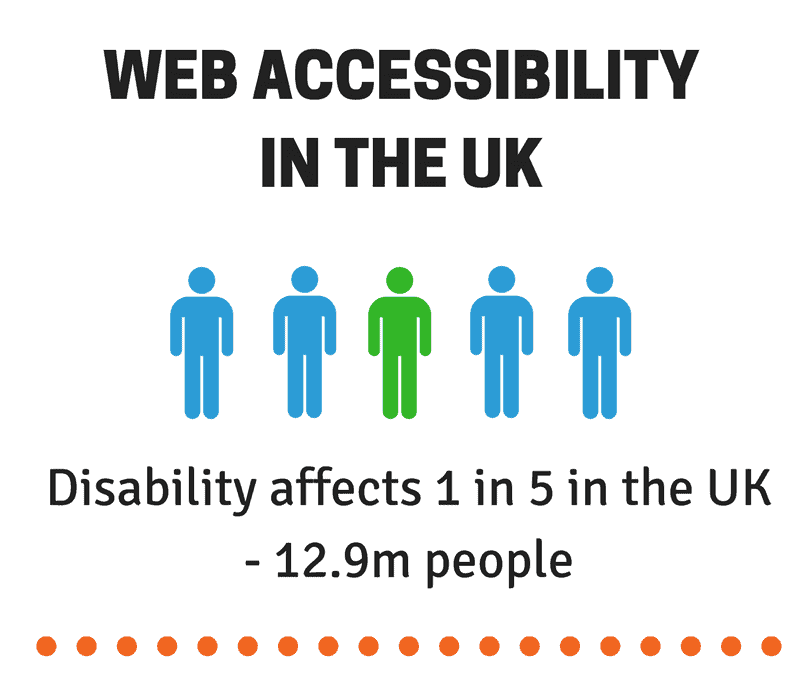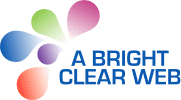
I was recently asked in one of my blogging groups to create an infographic. (For my previous attempt at this, see 7 Random Facts about the World Wide Web).
As part of the challenge, and in honour of World Usability Day yesterday, I have chosen to make my infographic on web accessibility.
I’ve taken a UK slant as that’s where I live and where most of my facts have come from.
It’s likely that wherever you are in the world, there will be similar stats.
There is a full text description with links under the infographic.
I hope you enjoy it, and sharing is most welcome!
Web Accessibility in the UK
Disability affects 1 in 5 in the UK – 12.9m people.
(Source: Family Resources Survey 2014-2015)
This includes
- 11m people with hearing loss
(Source: About deafness and hearing loss: Statistics) - Almost 30% disabled people with dexterity problems
(Source: Family Resources Survey 2014-2015) - 5m adults who struggle to read and write
(Source:Five MILLION British adults lack basic reading, writing and maths skills, research finds) - >2m living with sight loss
(Source: How many people in the UK have sight loss?)
£212bn – value of the “purple pound”.
(Source: Why Aren’t Businesses Pursuing the £212bn Purple Pound?)
But
1 in 4 disabled adults in the UK have never used the internet.
(Source: Internet users in the UK: 2016)
Why?
- Expense – hardware, software & broadband
- Lack of skills or training
- Need for assistive technology
(Source: Disabled people ‘face online barrier to services’)
And when they do get online…
70% of sites in the UK are inaccessible.
Common Accessibility Fails
- Bad or missing text alternatives for non-text content
(Source: Three common accessibility pitfalls for developers: text alternatives) - Poor colour contrast
(Source: Three common accessibility pitfalls for developers: colour contrast) - Users can’t get the info they need
(Source: Three common accessibility pitfalls for developers: information and relationships)
Making your site more accessible
Use online testing tools
Learn and implement WCAG 2.0 principles
- Perceivable
- Operable
- Understandable
- Robust
(Source: WCAG 2.0)
Keep informed – web accessibility hashtags
- #accessibility
- #a11y
- #MakeTheWebAccessible – campaign for better web accessibility. Run by People for Research: Make the Web Accessible
- #NoMoreCraptions
- #AXSChat – regular Tuesday Twitter chat on accessibility and inclusion. AXSChat website.
Brought to you by A Bright Clear Web.



Claire, gosh I really did not know all of this. That’s pretty sad that these people are unable to access the Internet. How great that this post raising awareness of it. Amazing!
Thanks for commenting, Carrie.
Access really depends on the type of impairment, technology the person has available and the thoughtfulness of web designers & developers to make content available to as many as possible. 🙂
Excellent and very thorough as always! I should have read before posting my own little article http://itelementaryschool.com/what-is-accessibility/ which comes from the top-down looking at ‘accessibility’ as a more general term and good practice, for all abilities…I will share and add a link.
Thanks Tony, and thanks for the trackback. 🙂